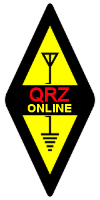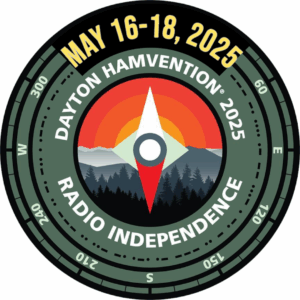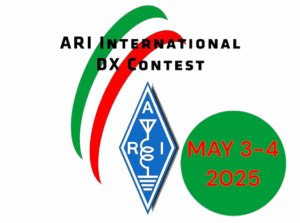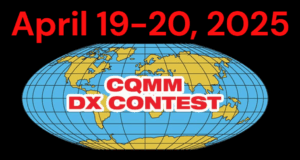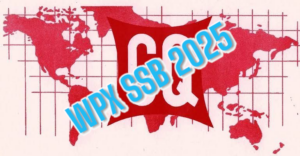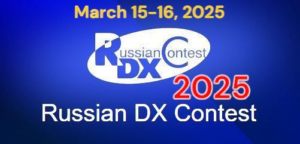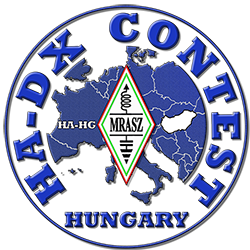
1. Organizer: Magyar Rádióamatőr Szövetség (www.mrasz.hu).
2. Objective: Increasing activity on the air, strengthening the reputation of amateur radio operators, demonstration and improvement of technical skills and knowledge across the world.
3. Date and time: every year 3rd full weekend of January, from Saturday 12:00 UTC to Sunday 12:00 UTC. In 2023: 21-22 January.
4. Participants: every amateur radio operator in the world, accepting these contest rules affixed here.
5. Bands: 160, 80, 40, 20, 15, 10 meters bands in accordance with your country’s and IARU Region’s band allocations.
6. Modes: A1A morse code (CW) and A3J phone (SSB).
7. Categories:
| SOSB 10 | single operator, single band (10m), without power and mode limitations | |||
| SOSB 15 | single operator, single band (15m), without power and mode limitations | |||
| SOSB 20 | single operator, single band (20m), without power and mode limitations | |||
| SOSB 40 | single operator, single band (40m), without power and mode limitations | |||
| SOSB 80 | single operator, single band (80m), without power and mode limitations | |||
| SOSB 160 | single operator, single band (160m), without power and mode limitations | |||
| SO3BAND | single operator, on 3 bands according to the choice of participant, without power and mode limitations. | |||
| SOAB | CW HP | single operator, all bands, CW mode, HP | ||
| SOAB | SSB HP | single operator, all bands, SSB mode, HP | ||
| SOAB | MIX HP | single operator, all bands, MIX mode, HP | ||
| SOAB | CW LP | single operator, all bands, CW mode, LP | ||
| SOAB | SSB LP | single operator, all bands, SSB mode, LP | ||
| SOAB | MIX LP | single operator, all bands, MIX mode, LP | ||
| SOAB | MIX QRP | single operator, all bands, MIX mode, QRP | ||
| MS | MIX | multi operator, all bands | ||
| YOUTH6H | MIX | single operator |
Single Operator All Bands Mixed 6 hours – only YOUTH6H
YOTA: defined by IARU (International Amateur Radio Union), any youngster ≤ 25 years old.
Maximum of 6 hours operating time, with ceases of operation being at least 1 hour. It means that a break between QSOs of more than 60 minutes does not count as operating time.
In single operator (SO) categories, band and mode switching is allowed without time limitations, but only one signal may be transmitted at a time. The operator alone performs all operational activities. This includes LOG management, antenna rotation, tuning, etc. in addition to transmitting on the air.
In the SO3BAND category, any 3 bands could be marked when submitting the LOG. QSOs can made on other bands as well but must be included in the LOG.
In MS, there is no time limit for switching between in-band modes for a “RUN” station, but changing bands are only allowed after spending 10 minutes counted from the first QSO on the new band. If the station spends less time on the new band, then in the remaining time its QSOs will be marked zero points and will not count as multipliers.
In the MS category, “MULT” – multiplier station – is only allowed to work a new multiplier on a different band than the “RUN”. There is no time limit for switching between in-band modes for a MULT station, changing bands are only allowed after spending 10 minutes counted from the first valid multiplier QSO on the new band. If the multiplier station spends less time on the new band, then in the remaining time its QSOs will be marked zero points and will not count as multipliers.
If the log evaluation reveals that the QSO made on the other band is not a multiplier, it is worth zero points. The “MULT” station cannot transmit CQ contest call.
In MS category, up to 2 signals can be transmitted at a time: one on the “RUN” band and the other on the “MULT” band.
QRP: Up to 5 watts of output power on all transmitting antennas
LP: Output power up to 100 watts on all transmitting antennas
HP: More than 100 watts of output power on all transmitting antennas
The category descriptions to be included in the Cabrillo file headers can be found at http://www.ha-dx.com under “Submit log” > “Example Cabrillo”.
8. Contest contacts: Everyone can work with everyone. Only the first valid QSO per band with the same station counts, except for the MIX categories where it is possible to work with the same station on the same band in CW and SSB modes.
9. Serial number:
HA stations: RS(T) and abbreviation of the county where the station is located.
Non-HA stations: RS(T) and incremental serial number.
The abbreviations of the Hungarian counties are attached in Annex 1.
10. Scoring:
| Contact with a Hungarian station: | 10 points | |
| Contact with a station on your continent: | 2 points | |
| Contact with a station on another continent: | 5 points |
The / AM, / MM stations are worth two points regardless of country and cannot be taken into account as a multiplier.
Multipliers: worked DXCC + WAE list countries (exception HA) and Hungarian counties (BA, BE, BN, BO, BP, CS, FE, GY, HB, HE, SZ, KO, NG, PE, SO, SA, TO, VA, VE, ZA) per band, regardless of mode.
The final result is the sum of points earned per band and mode multiplied by the sum of multipliers worked per band.
11. Logs: CABRILLO file format. The Cabrillo file can be uploaded on the contest’s website at http://www.ha-dx.com .
Those who cannot send the Cabrillo file can manually type their logs at http://www.ha-dx.com .
Any information or comments regarding the contest can be sent to the following email address: versenybizottsag@mrasz.hu
Log submission deadline: Logs must be uploaded on the HA-DX website within 5 days of the end of the contest.
An extension of the deadline may be requested from the organizer of the competition before the deadline, with stating reasons. The extension of the deadline is valid only if the organizer confirms this in written form.
12. Log checking: Logs are checked using specifically designed software and human evaluation.
Dupe contacts do not result in penalty points.
Contacts with an incorrect serial number are worth zero (0).
Contacts with an incorrectly received call sign or requested contacts not included in the other station’s log do result in zero points and a deduction of twice the point value of the contact.
13. Evaluation: The organizer is responsible for checking and evaluating the logs. Participants are expected to follow written and unwritten rules of amateur radio operations. Violations of the competition rules or unsportsmanlike conduct may result in action by the Competition Committee.
Unsportsmanlike behaviors may include, but are not limited to:
Establishing or confirming contacts before, during or after the competition using any non-radioamateur method, such as: telephone, messaging applications, chat rooms, forums, VoIP, email, social media, websites, etc.
Transmission outside the bands specified in the license.
Changing the contact timestamp in the log to meet the so-called 10 minutes rule.
Requesting unverifiable contacts or multipliers.
14. Prizes: The diplomas can be downloaded from the HA-DX website once the final result of the contest has been announced. First prize categories may receive other awards, depending on the sponsors.
Publication of results: The final results of the competition will be published on the website of the competition ( http://www.ha-dx.com ).
15. Other provisions:
The radios and antennas must be in physical contact with each other and within 500 meters.
Contacts that violate the 10-minute rule should not be deleted from the log, but marked with an X-QSO in the Cabrillo log. Contacts marked with the X-QSO do not result in penalty points.
Do not delete dupe contacts! If there is a valid contact to a station in the same band and mode, it will be scored. It counts as zero (0) points without penalty point even if the received serial number is incorrect or the contact is not included in the other station’s log.
For logged contacts, the time difference between the 2 stations’s log records may not exceed 3 minutes. Exceeding that, the contact will be deleted. This does not authorize anyone to establish a contact outside of the contest period. It is advisable to synchronize your computer clock with your GPS or Internet time server before the contest.
The callsign of a multiplier, if no log has been submitted from them, must be included in the logs of at least 10 competitors. Otherwise the multiplier contact will be deleted.
Cluster is allowed to be used in any category, but self-spotting and spot requests are not allowed. In the case of a clearly identifiable self-spotting, related to the operator and not the callsign, the log of the affected station can only be accepted for control.
The operation of the contest logger programs other than the contest rules shall not be the subject of subsequent protests.
PARTICIPANTS IN THE SINGLE OP: OPERATOR+1 PERSON, MULTI OPERATOR OP: UP TO 8 PERSON CATEGORIES WITH THE HIGHEST SCORES ARE INVITED TO SPEND 1 WEEK IN THE MRASZ BUDAPEST GUEST HOUSE.
Annex 1 to the HA-DX International Shortwave Radio Contest Rules
| County | County abbreviation |
| Bács-Kiskun | BN |
| Baranya | BA |
| Békés | BE |
| Borsod-Abaúj-Zemplén | BO |
| Csongrád | CS |
| Fejér | FE |
| Győr-Moson-Sopron | GY |
| Hajdú-Bihar | HB |
| Heves | HE |
| Jász-Nagykun-Szolnok | SZ |
| Komárom-Esztergom | KO |
| Nógrád | NG |
| Pest | PE |
| Somogy | SO |
| Szabolcs-Szatmár-Bereg | SA |
| Tolna | TO |
| Vas | VA |
| Veszprém | VE |
| Zala | ZA |
| Budapest (capital) | BP |
it is time to remind you about the upcoming HA-DX Contest to be held
21-22th January. Last year we received 2287 logs, so we can expect a nice contest again with lots of HA stations and others from around the World.
To facilitate contesting for young operators, this year we shall introduce a 6 hour category for them, similar to the YOTA contest. This may help them to enjoy the contest even more.
Now we kindly invite you to join us and take part in this nice event.
We would be more than glad if you could remind your HAM friends/community to take part in HA-DX.
All information is now available on our official web page: https://ha-dx.com
Hope to see you on the air!
73 HA-DX Contest committee
